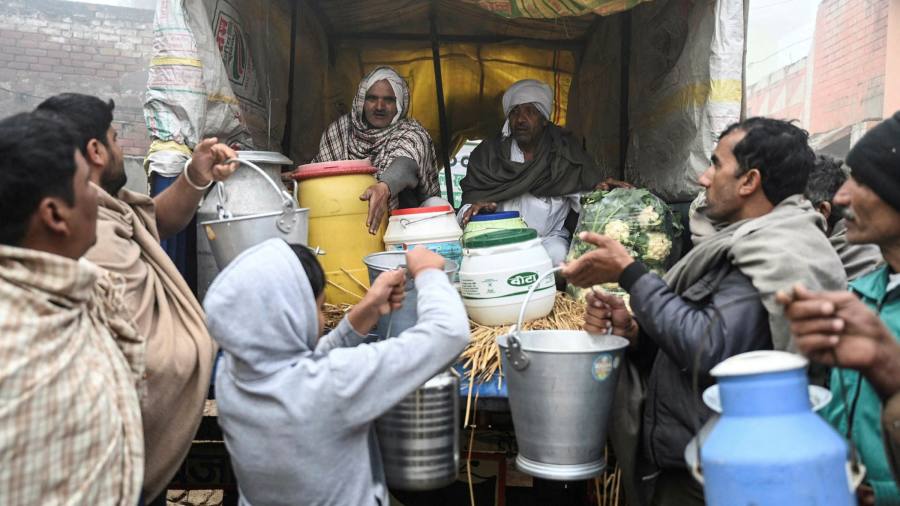[ad_1]
India’s state food agency has a chronic problem: its grain silos are overflowing with wheat and rice, forcing it to store large quantities outdoors. There, under plastic tarps, much of it slowly rot away, ruined by the searing heat and driving rain, and nibbled by rats.
This waste — in a country haunted by pervasive child malnutrition — reflects a deep structural problem: India’s farmers grow too much cereal, while 1.4bn Indians need more nutritious food, including proteins, fruit and vegetables.
Indian agriculture requires a transformation: to make it more financially and ecologically sustainable, to boost production of diverse crops and to woo investment in infrastructure.
Prime Minister Narendra Modi’s government has pledged to double farmers’ income and thinks the answer is to give private companies a bigger role, so they can re-engineer agricultural supply chains. It has overhauled India’s farm laws to allow that.
But farmers have spent months agitating against the new laws.
Ajay Vir Jakhar, chairman of Indian farmers’ forum Bharat Krishak Samaj, said New Delhi should have laid out a comprehensive, long-term vision for Indian farmers — and then offered the right incentives, including financial and technical support, to help them diversify.
“Reforms are required, but those reforms must be undertaken with people whose practices are being reformed,†Jakhar said. “Every reform is going to create pain for a section of society. That pain needs to be addressed as part of the process.â€
India’s farm policies still reflect the priorities of the 1960s, when the Green Revolution brought high-yielding wheat and rice seeds to a country struggling with shortages and pervasive hunger.
To encourage subsistence farmers to invest in cultivating in the hybrids, New Delhi procured food grains from farmers at prices that made it profitable for them, and then distributed those cereals to the poor for a token fee.
Since then, farmers have prospered by selling wheat and rice to the state. But decades of intensive cereal cultivation have come at a heavy ecological price, including draining the water table and air pollution as farmers burn crop residues.
The Food Corporation of India has accumulated huge surplus grain stocks, at a hefty cost to the public exchequer. It has about 80m tonnes in its custody — double the government’s target.
Meanwhile, other crops such as lentils, oilseeds and fresh produce are sold by farmers to private traders, mostly at government-regulated markets where farmers get only a fraction of the end price paid by consumers. So for the poor, nutritious foods other than grains are still out of reach.
Now, Modi has paved the way for deeper corporate involvement by allowing farmers to grow crops for companies at preset prices, permitting companies to buy crops directly from growers outside state markets and removing previous limits on the amount of commodities that companies can hold and store.
Modi says the new rules liberate farmers, giving them freedom to transact while avoiding exploitative middlemen. But farmers fear the move is a step towards winding back public grain procurement, which they say would leave them at the mercy of corporations.
Mekhala Krishnamurthy, a social anthropologist at Ashoka University, said fixing agriculture required targeted public investment, not just deregulating commodity markets to allow more private participation.
“The idea that you have changed the law and everything else will follow will not work,†she said. “The assumption that the only thing preventing the private sector from investing was regulation is not true.â€
At the heart of India’s agricultural challenge, some experts say, is the fact that most Indians are constrained in how much they can afford to spend on more nutritious food. Before the pandemic, Indian consumers spent about 30 per cent of their household income on food and beverages — a figure likely to have risen since then.
Until more Indians can afford to eat better, farmers’ aspirations will be difficult to realise.
“Whatever price farmers get is a function of [the] price various consumers are willing to pay,†Krishnamurthy said. “If Indians don’t have money to spend on food, it’s not going to translate into farmers’ income.â€
[ad_2]
Source link





